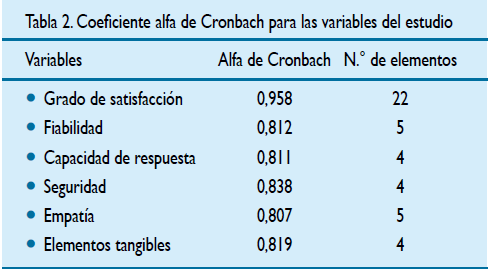Quality of care and satisfaction of patients treated in the emergency service from Hospital Essalud II Vitarte
DOI:
https://doi.org/10.36393/spmi.v31i4.5Keywords:
Quality of attention, level of satisfaction, service, questionnaire, ServqualAbstract
Objective. To determine the relationship between quality of attention and the level of satisfaction of patients attended in the medicine room of Emergency Service, Hospital EsSalud II Vitarte, Lima. Material and Methods. An observational descriptive, prospective, cross-sectional and correlational study was performed in February 2017. The sample size was calculated with 9 % precision and 95% confidence level. A Servqual questionnaire was administered at the end of attention in the medicine room. Analyses included descriptive statistics, the validity of the questionnaire, overall reliability, correlations, analysis of variance and regression analyses. Results. A total of 124 surveys were taken: 53,2 % were women; 40,3% were between 36 and 64 year-old; and, 62,9 % had high school or advanced instruction. The Cronbach's alpha for the questionnaire was 0,958; the Kendall Tau-b correlation coefficient was 0,68. The analysis of variance and multiple linear regressions determined that the five dimensions (reliability, responsiveness, assurance, empathy and tangibility) influenced in the level of satisfaction of patients. The empathy was the most influential dimension (beta=0,906) on patient satisfaction. Conclusion. The results evidenced the relationship between quality of attention and the level of satisfaction of patients. The empathy was the most influencing dimension on patient satisfaction.
Downloads















